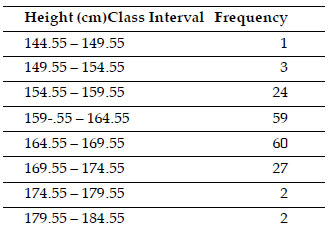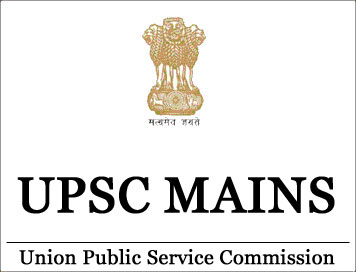(HOT) UPSC Current Affairs 2025 PDF
NEW! The Gist (NOV-2025) | E-BOOKS
(Exam Paper) UPSC IAS Mains 2012: General Studies Paper - II
(Exam Paper) UPSC IAS Mains 2012: General Studies
Paper – II
1. Answer any five of the following in about 250 words. 25 × 5 = 125
(a) Do you think that China’s emergence as one of the largest trading
partners of India has adversely against the settlement of the outstanding border
problem?
(b) Discuss the globalization R & D and its impact on India’ development.
Provide an illustration from at least sectors such sas Information Technology or
Health.
(c) Discuss the contentious issues that have caused the prolonged constitutional
logjam in Nepal.
(d) The human population is abated to grew to 9 billion by 2050. In this
context, many scientist predict that plant genomes would play critical role in
keeping out hunger and preserving the environment. Explain.
(e) ‘The situation today is far different to that prevalent fifty years back
when the Indus Water treaty was seined.’ Highlight the complexity of the current
challenges on both sides of the border in this regard. Do you think that a
review of the Treaty is in India’s best interests?
2. Answer any five of the following in about 150 words each: 15 × 5 = 75
(a) Write a short analytical note on Indian Diaspora. How is the “New
Diaspora” different from the “Old Diaspora”?
(b) Why have the resource rich African and South Asian countries remained poor
of decades? Explain.
(c) Does Putin’s return as President of Russian mark a shift to a
confrontationist stance in international diplomacy towards the West?
(d) Analyse critically the interlinkages between the Convention on Biological
Diversity and FAO Treaty on Plant Genetic Resources for Food and Agriculture.
(e) Critically review the international concern in achieving the target set for
the Minimum Development Goals.
(f) Discuss the likely negative impact of the protectionist measure proposed by
the US on India’s software industry.
3. Answer any six of the following in not more than 100 words each: 10 × 6 = 60
(a) In the context of Assisted Reproductive Technologies. India has emerged as a hut of commercial surrogacy. What key biological, legal and ethical issues merit consideration while framing the regulation to govern surrogacy in India?
(b) Why is international trade perceived to have failed to act as an “engine
of growth” in many developing countries including India?
(c) Despite strict prohibitory regulations, “doping” has become increasingly
common amongst athletes. Name five commonly used performanceenhancing drugs.
What are the risks associated with their use?
(d) Compare the significance of IBSA and BRICS in the context of India’s
multilateral diplomacy.
(e) The safe landing of the “Curiosity” Rover under NASA’s space programme has
sparked many possibilities. What are these and how could humankind benefit from
them?
(f) How have the US sanctions against Iran affected India’s bilateral relations
with Iran?
(g) What is Perm culture? Give at least three common examples where permaculture
concepts are being put to use.
4. Answer the following is not more than 50 words each: 5 × 6 = 30
(a) The Sequoias supercomputer was launched this year. What are its specific
features and what its purpose?
(b) What 5is measure by the G8 + 5 groups?
(c) The Human Papilloma Virus vaccine has been making the headlines in the
recent months. Who make the ideal candidates for receiving this vaccine and what
are its benefits?
(d) What are India’s stakes in the South China Sea?
(e) Explain the concepts “Environmental Sustainability” and “Sustainable
Development of People”?
(f) Explain briefly the “Clean Development Mechanism” as provided under the
United Nations Framework Convention on Climate Change (UNFCCC).
5. (A) The following table gives the number of mistakes made by 16 data entry clerks who enter medical data from case report forms. The column Entered indicates the number of values entered, and the column Errors give the number of coding errors that were detected among these.
Entered Errors
4434 35
4841 42
6280 15
1958 28
7749 36
2829 42
4239 18
3303 64
4706 34
3770 40
3363 36
1740 23
3404 27
1640 26
3803 56
1529 20
(i) Make a scatter-plot of these data. Which do you choose for the response
and which for the explanatory variables? Describe any patterns.
(ii) Does the scatter-plot indicate any relation between the two variable?
(iii) One analyst concluded, “The clerks who enter more values make more
mistakes. Evidently they become tried as they enter values.” Is this on
appropriate conclusion?
(B) The following table provides the Rural and Urban population of West Bengal according to the Censuses of 1921 – 1951:

(i) Construct a sustainable diagram to compare the population figures.
(ii) Comment on the change in populations.
(C) Suppose milk being sold at the rates of 18, 20, 22 and 25 rupees per litre in four different months. Assuming that equal amounts of money are spent on milk by a family in the four months, using a suitable measure, determine the average price in rupees per litre.
6. (A)
(i) Determine the median and mode for the following distribution of monthly income for 580 middle-class people of a country:

(ii) Also obtain an approximate value of the mean income from the values of
median and mode.
(iii) Comment on the nature of the income distributers.
(B) From the frequency distribution of height for 177 Indian adult given below, draw the ‘more than type’ give:

Also locate the position of the median.
(C) A survey of 1000 large U.S. companies conducted by a Research Organisation asked their plans for outsourcing highlevel white-collar jobs to countries outside the U.S. The following table shows the percentage that indicated a certain action. The data for 2003 are real, the data for 2008 are speculative.

(i) Does the Bar chart compare the impression of any anticipated trend in
outsourcing of white-collar jobs?
(ii) Does the mode differ from the median for the distribution of percentages in
2003 and 2008?



